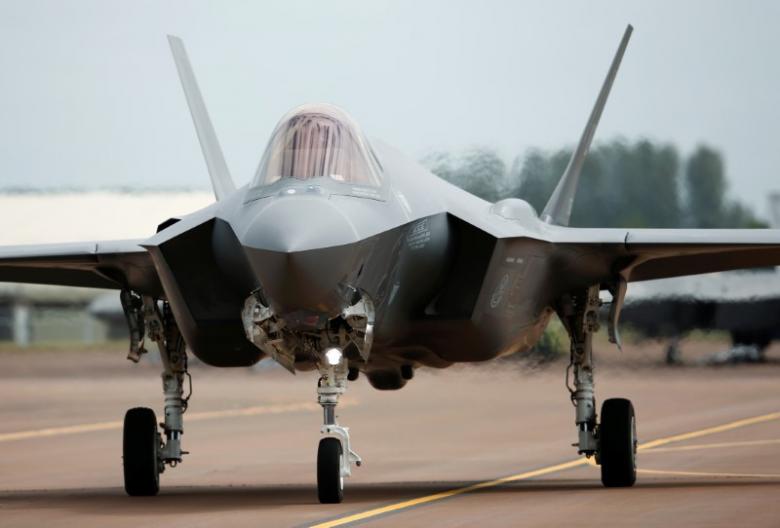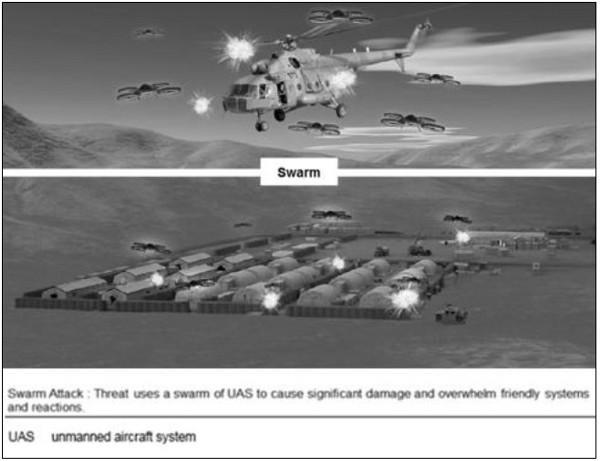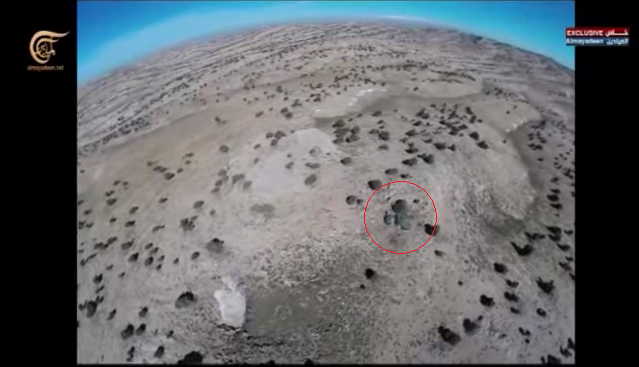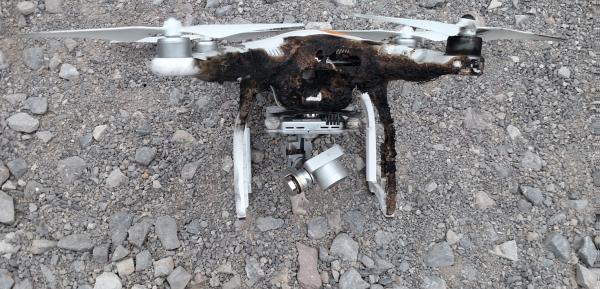The United States Air Force wants to get the right to shoot down civilian drones
In 2015, on GT there was an article Drone in law. Fly, but remember about the problems and threats associated with flying drones:
Russian lawmakers often copy the decisions of other countries that have encountered this before, often creatively reworking beyond recognition or absurdity to solve the emerging issue. One of these countries is the United States, where another question has ripened to the owners of civilian drones. In the coming years, we can expect the same question to arise in our country.
Recently, an article was published on AirGuide about the problems of the US Air Force due to drones: they fly over air bases and almost collide with fighters worth $ 250 million.

The head of the Combat Aviation Command of the United States Air Force wants to get permission to fight civilian drones, including, and shoot down those that threaten the flights of combat aircraft. Two recent incidents, one of which involving the F-22 Raptor, revealed that the military was defenseless in the face of potentially costly trouble.
General James Holmes, head of aviation command, was quoted by Aviation Week, which describes the last two incidents involving drones. First, the F-22 Raptor, who was landing, almost collided with a small commercial unmanned aerial vehicle. And the same week, Air Force security officers watched as a civilian drone flew over the air base perimeter and along the aircraft parking and maintenance area before disappearing.
Flying drones over airbases in the United States are already illegal, but taking action against them at this time, including such as remote shutting down or shooting at them, is a matter of the federal level, and currently only federal civilian agencies can affect civilian unmanned aerial vehicles. devices.
In both cases, Holmes noted that the air force actually does not have the legal force to do anything with unmanned aerial vehicles, in particular, to shoot at them. Unmanned aerial vehicles are four main types of threats : from espionage to indirect and direct attacks.

Graphic depicting unmanned attacks swarm drones. Source: Techniques for Combined Arms for Air Defense.
One of the tactics of attack can be an attack of a swarm of drones, terrorist or organized by a hostile state, damaging the air base or troops.
“Imagine a world in which several hundred drones are flying, and one of my F-22s is falling, sucking one of them into the engine. I need the authority to handle this, ”said General Holmes during his visit to the US Congress.

GT: Fighting multicopter in Syria
Increasingly, small commercial drones are used in modern hot spots by terrorists and insurgents, and even by government forces from Iraq and Syria. Since 2015, the US Army has been exploring ways to combat the new threat — it is testing new types of anti-aircraft guns and laser weapons.

Copter destroyed by an experimental laser system.
Devices that can destroy unmanned aerial vehicles, including forcing them to land, are currently in field operation in Iraq to fight ISIL unmanned aerial bomber. Islamic state engineers have achieved great success in equipping commercially available drones with devices for dropping hand grenades, artillery mines and other improvised ammunition.
If General Holmes achieves his intended goal, the Air Force security service may soon use a weapon like Battle Labs DroneDefender .
if inadvertently doing something wrong or forgetting about simple rules, you may run into trouble. At best, the user risks simply losing the drone, at worst - making problems with the law. About this today and talk.
Russian lawmakers often copy the decisions of other countries that have encountered this before, often creatively reworking beyond recognition or absurdity to solve the emerging issue. One of these countries is the United States, where another question has ripened to the owners of civilian drones. In the coming years, we can expect the same question to arise in our country.
Recently, an article was published on AirGuide about the problems of the US Air Force due to drones: they fly over air bases and almost collide with fighters worth $ 250 million.

The head of the Combat Aviation Command of the United States Air Force wants to get permission to fight civilian drones, including, and shoot down those that threaten the flights of combat aircraft. Two recent incidents, one of which involving the F-22 Raptor, revealed that the military was defenseless in the face of potentially costly trouble.
General James Holmes, head of aviation command, was quoted by Aviation Week, which describes the last two incidents involving drones. First, the F-22 Raptor, who was landing, almost collided with a small commercial unmanned aerial vehicle. And the same week, Air Force security officers watched as a civilian drone flew over the air base perimeter and along the aircraft parking and maintenance area before disappearing.
Flying drones over airbases in the United States are already illegal, but taking action against them at this time, including such as remote shutting down or shooting at them, is a matter of the federal level, and currently only federal civilian agencies can affect civilian unmanned aerial vehicles. devices.
In both cases, Holmes noted that the air force actually does not have the legal force to do anything with unmanned aerial vehicles, in particular, to shoot at them. Unmanned aerial vehicles are four main types of threats : from espionage to indirect and direct attacks.

Graphic depicting unmanned attacks swarm drones. Source: Techniques for Combined Arms for Air Defense.
One of the tactics of attack can be an attack of a swarm of drones, terrorist or organized by a hostile state, damaging the air base or troops.
“Imagine a world in which several hundred drones are flying, and one of my F-22s is falling, sucking one of them into the engine. I need the authority to handle this, ”said General Holmes during his visit to the US Congress.

GT: Fighting multicopter in Syria
Increasingly, small commercial drones are used in modern hot spots by terrorists and insurgents, and even by government forces from Iraq and Syria. Since 2015, the US Army has been exploring ways to combat the new threat — it is testing new types of anti-aircraft guns and laser weapons.

Copter destroyed by an experimental laser system.
Devices that can destroy unmanned aerial vehicles, including forcing them to land, are currently in field operation in Iraq to fight ISIL unmanned aerial bomber. Islamic state engineers have achieved great success in equipping commercially available drones with devices for dropping hand grenades, artillery mines and other improvised ammunition.
If General Holmes achieves his intended goal, the Air Force security service may soon use a weapon like Battle Labs DroneDefender .
All Articles